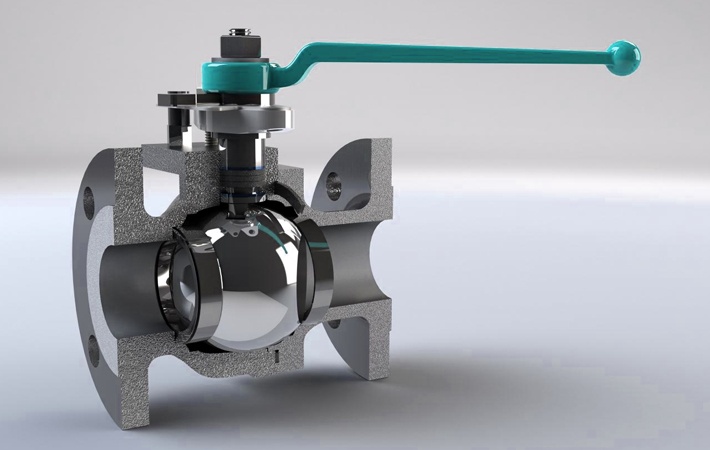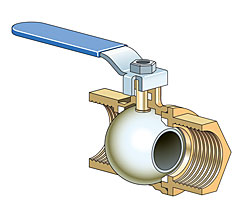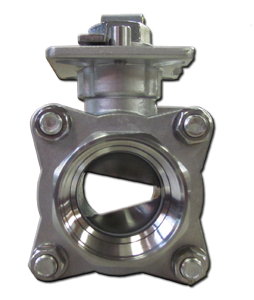
 If you have basic valve knowledge, you are probably familiar with ball valves – one of the most common types of valves available today. A ball valve is typically a quarter-turn valve with a perforated ball in the middle to control flow. These valves are known for being durable with excellent shutoff, but don’t always offer very precise control. Let’s talk about when it’s okay to use a ball valve as a control valve.
If you have basic valve knowledge, you are probably familiar with ball valves – one of the most common types of valves available today. A ball valve is typically a quarter-turn valve with a perforated ball in the middle to control flow. These valves are known for being durable with excellent shutoff, but don’t always offer very precise control. Let’s talk about when it’s okay to use a ball valve as a control valve.
Even though ball valves aren’t the best device to control flow, they are still commonly used because of their cost effectiveness. You can get away with using a ball valve in an application that doesn’t require precise adjustability and control. For example, a ball valve should have no problem keeping a large tank filled at a certain level within a few inches.
As with any equipment, you will need to take the complete process conditions into consideration before selecting your valve. This includes the product or material, size of piping, flow rate, etc. If you are trying to control an expensive material that you are worried about wasting, you might not want to rely on a ball valve.
Ball valves aren’t very precise because their adjustment isn’t proportionate to the large amount of flow that the open hole provides. There is also ‘slop’ or ‘play’ in between the stem and ball that hinders precise control. Lastly, the amount of torque required to adjust ball valves doesn’t allow for fine adjustment near the “closed” and “open” position.
When you need precise control over your application, a globe valve will be more accurate than a ball valve. Globe valves are considered the industry standard for control valves because they are good at regulating flow, whereas ball valves are better for on/off control without pressure drop.
 If you must use a ball valve to control your process, you might want to consider different types of ball valves depending on your application. A trunnion or v-port ball valve will perform better and allow for more accurate adjustability in certain scenarios.
If you must use a ball valve to control your process, you might want to consider different types of ball valves depending on your application. A trunnion or v-port ball valve will perform better and allow for more accurate adjustability in certain scenarios.
Trunnion ball valves have an additional mechanical anchoring of the ball at the top and bottom. They use a splined or keyed stem connection that eliminates any play between the ball and stem. V-port ball valves have a ‘V’ shaped ball instead of the standard round hole. This allows for more control because of the tapered opening, allowing for more linear flow.
If you're located in Wisconsin or Upper Michigan and need help deciding which valve is best suited for your application, reach out to one of our engineers. Otherwise if you enjoyed this article, you might want to check out our post about when to use soft-seat ball valves vs. metal-seat ball valves.
These Stories on Valves
Headquarters and Service Center
Located outside Green Bay, WI
707 Ford Street
Kimberly, WI 54136
920-733-4425
OptiFlow Design and Build Center
1002 Truman Street
Kimberly, WI 54136
920-733-4425
Burnsville Service Center
12265 Nicollet Avenue
Burnsville, MN 55337
952-444-1949
Grand Rapids Service Center
26489 Industrial Blvd
Cohasset, MN 55721
952-444-1949
© Copyright 2024. Crane Engineering. All Rights Reserved. Privacy Policy.